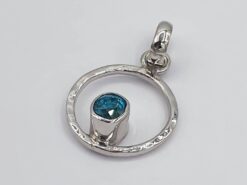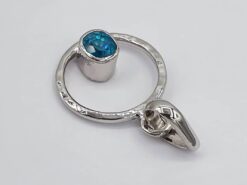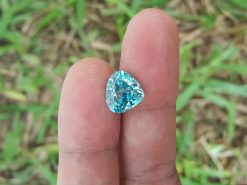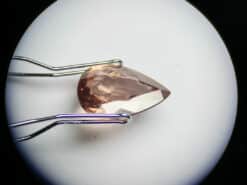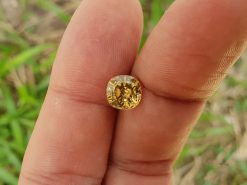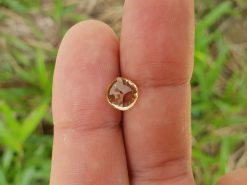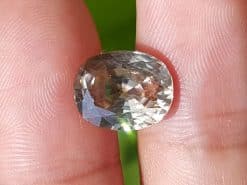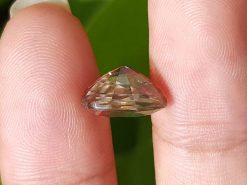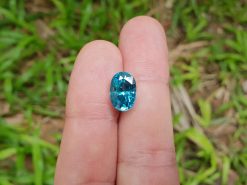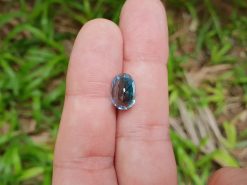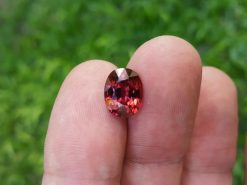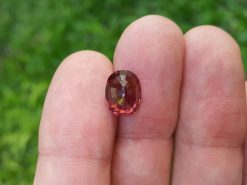Zircons, from Sri Lanka

Buy natural zircons in our gem shop
Zircon is a mineral belonging to the group of nesosilicates. Its chemical name is zirconium silicate, and its corresponding chemical formula is ZrSiO4. A common empirical formula showing some of the range of substitution in zircon is (Zr1–y, REEy)(SiO4)1–x(OH)4x–y.
Zircon forms in silicate melts with large proportions of high field strength incompatible elements. For example, hafnium is almost always present in quantities ranging from 1 to 4%. The crystal structure of zircon is tetragonal crystal system.
The natural color of zircon varies between colorless, yellow-golden, red, brown, blue and green. Colorless specimens that show gem quality are a popular substitute for diamond and are also known as “Matura diamond”.
The name derives from the Persian zargun, meaning “gold-hued”. This word is corrupted into “jargoon”, a term applied to light-colored zircons.
The English word “zircon” is derived from Zirkon, which is the German adaptation of this word. Yellow, orange and red zircon is also known as “hyacinth”, from the flower hyacinthus, whose name is of Ancient Greek origin.
Zircon is ubiquitous in the crust of Earth. It occurs as a common accessory mineral in igneous rocks, in metamorphic rocks and as detrital grains in sedimentary rocks.
Large zircon crystals are rare. Their average size in granite rocks is about 0.1–0.3 mm, but they can also grow to sizes of several centimeters, especially in mafic pegmatites and carbonatites. Zircon is also very resistant to heat and corrosion.
Because of their uranium and thorium content, some stones undergo metamictization. Connected to internal radiation damage, these processes partially disrupt the crystal structure and partly explain the highly variable properties of zircon.
As zircon becomes more and more modified by internal radiation damage, the density decreases, the crystal structure is compromised, and the color changes.
Zircon occurs in many colors, including reddish brown, yellow, green, blue, gray and colorless. The color of zircons can sometimes be changed by heat treatment. Common brown zircons can be transformed into colorless and blue zircons by heating to 800 to 1000 °C.
In geological settings, the development of pink, red, and purple zircon occurs after hundreds of millions of years, if the crystal has sufficient trace elements to produce color centers. Color in this red or pink series is annealed in geological conditions above temperatures of around 400 °C.
Natural zircons, from Sri Lanka

